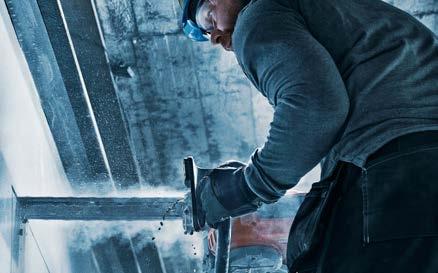
2 minute read
VIDEO AND MUSIC
VIDEO & MUSIC
Video and music, and especially in combination, are powerful tools for effective communication. The tempo and the style of music set the mood and express the brand personality, as well as the choice of transitions and cutting tempo in video productions.
VIDEO
Video is becoming as ubiquitous as still photography used to be, and is increasingly being used as a stand-alone production or as an aid to show how our products work. Video is also a method for sharing events, seminars and demonstrations.
Video material made publicly available should be branded properly so its provenance is clear, and permission from participants and contributors should be documented.
www.youtube.com/husqvarnaCP
QUALITY
Premium quality is the number one guideline for video and film; exceptions can be made for certain editorial videos or in rare cases. This applies to both technical (resolution, codec, bitrate etc.) and production quality including sound. Always optimize the technical quality for the distribution channel.
TRANSITIONS
Even the type of transitions used communicates the brand personality. That’s why we only use straight cuts or fades /cr ossfades. Don’t use wipes, irises or other effect-like transitions.
CUTTING TEMPO
The tempo of the production should never be stressed. When background music is present, be sure to match the beat.
SOUND
Use sound sparingly and never as an effect. Environment sounds should only be used to create a subtle background atmosphere.
GRADING
The video should have the same type of grading as our images. Use a cooler colour tone, and let the orange in the products be the one colour that stands out. All other colours should be toned down. Use international English speakers without any distinct accent – male or female. The voice should sound level-headed, trustworthy, comfortable yet interesting – never bold, comical or intrusive.
INTROS/OUTROS
Intros and outros should always be used. Use fade-in intros. Outros should always end with the Husqvarna Construction Products
SPEAKER
logotype and then fade-out.
TEXT
When using text in video, use the same guidelines as for print. It’s important to consider the readability of the text presented because many people view videos in their mobile devices today. Introduce texts directly, or with fade in (then fade out) - never with swirls, wipes etc. Never use text as an effect. And make sure the audience has time to read the text without stress.
MUSIC
Music plays an important role in how we perceive the brand. In most productions, music should play a supporting role; it should never dominate. In instructional productions, the music should always be mixed in with the background sounds, and there should never be any problem hearing what the speaker says.
Music that represents the brand personality should have a style that can be associated with one or more of the following characteristics:
–Modern –Light , airy –Electronic-based –Clean –Composed –Emotional
TEMPO
Choose tempo depending on usage. The feel of the music should never be stressed, and the beat should never dominate. When there is a defined beat, choose music around 75 bpm. Otherwise choose a tempo at the low end of 120 bpm, in the interval between 110–125 bpm.
ORIGINALITY
Use original music only. Stay away from covers and sound-alikes.
GENRES
Good examples of genres are pop, ambient, electronic, indie, folk and similar.
VOCALS
Most of the music should be instrumental, but when we create emotional productions, the use of vocals might be required. Don’t use vocal productions where the music isn’t the main moodsetter, or where a speaker is present.










